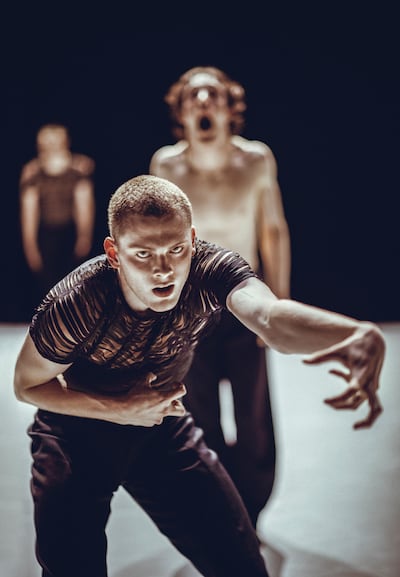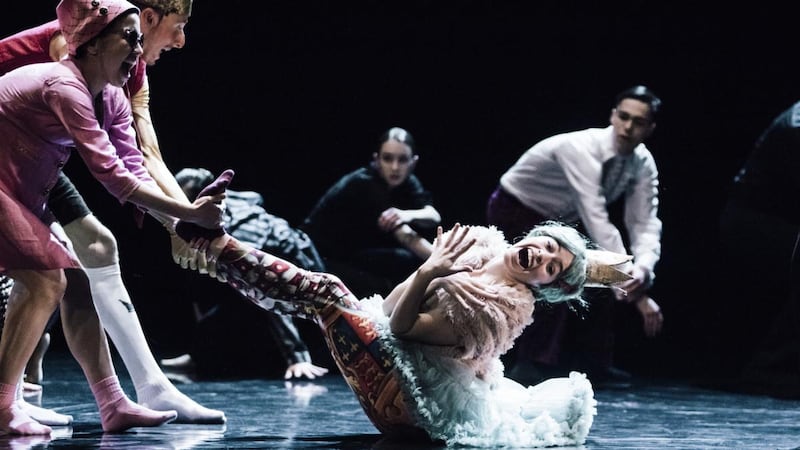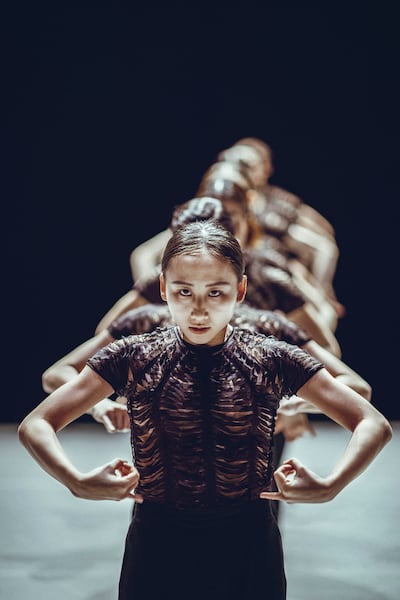Dance, like any art form, offers a connection to what’s happening around us. And sometimes a lifeline out of it. Many say that dance heals.
Like Michaela dePrince who fled Sierra Leone’s civil war and randomly saw a page of Dance Magazine fluttering against a fence. That image became her talisman of hope. She is now a soloist with Boston Ballet.
Or choreographer Mark Morris, who was so strongly affected by folk dancing in the 1960s Seattle of his youth that it still infuses what he creates today.
Stories abound on how art changes lives. Despite the personal tales, dance's transformative power may not always permeate entire institutions. One shining example however is Nederlands Dans Theater, an organisation in the Hague comprising two performing groups and some of contemporary dance's greatest talent. Nederlands Dans Theater 2 comes to Dublin on May 2nd and 3rd.
NDT would make any other arts group envious. Its company of younger dancers, NDT2, employs performers at the beginning of their careers and offers them the chance to prepare for work in the 27-member flagship company, NDT1. Progression from one company to the next is not guaranteed, but most dancers with any experience at either will most certainly have their pick of choice jobs in the dance world. The impressive 80-plus member staff at NDT offers considerable support; dancers have access to everything from talent development and education to musical direction and Pilates.

Before the pandemic began, NDT hired a new artistic director, Canadian Emily Molnar, to follow in the footsteps of the organisation’s previous directors, who have become legendary in their own right. Directing one of NDT’s two companies would keep anyone busy, and for the moment Molnar is managing both.
While both companies ceased performing during Covid, its members worked in bubbles going into the studio for rehearsals and workshops. Molnar describes it as a period of flourishing creativity. Normally the artistic staff would have much less time to develop new ideas given the number of performances they present during a season, so they used the time at Molnar’s insistence to fortify themselves as artists. While others might have found it daunting to lead this powerhouse dance organisation into its 60th anniversary season during a time of unforeseen world events, Molnar faced the challenges head on.
“I think dance is a potential remedy for some of the chaos of the world right now,” she says. “Because I know as a dancer it helped me; it was the only way that I was able to make sense of what I found confusing about how the world works. I found it through my body, through not disassociating myself from my feelings or my physicalness.”
Human potential
Molnar spent the previous decade directing Ballet BC in Vancouver. She rescued that company from financial straits while dramatically increasing the length of dancers’ contracts, equalising dancers’ pay and creating an extensive outreach programme. Although she faces a different remit at NDT, her ability to see the organisation as a whole and how it fits into the dance world drives her.
“The vision of NDT has always been about making work, but this has also got to be about dance as a larger conversation,” she says. “It’s like, ‘How many bridges can we build around what dance can be?’ It’s not only about selling it or getting someone to a theatre to watch. I think if we really do our jobs well we have to make it more universal. If we can connect people to their body, and make use of the mind and body connection more, to me, that’s about the human potential.”

NDT innovatively has been shaping the dance landscape for decades. In 1959 its founders began working with 18 dancers from Dutch National Ballet to create progressive dance productions that didn’t fit into a particular mould. Ballet was always at the heart of what they did, and since its inception Nederlands Dans Theater has pushed dance’s boundaries in all directions. It has made ballets with dancers barely clothed, dances with little or no music, dances with gender-neutral roles and ballets with provocative themes.
"No one says anything, but there is just this swell of energy, and you can feel it because you're so connected"
On the triple bill of dances coming to Dublin, The Big Crying is newest, choreographed by Marco Goecke to a soundtrack of songs by Tori Amos. In it the dancers execute rapid-fire arm motions with the same conviction as they do when falling into a kind of hypnotic swaying. As the 18 performers move together as one unit, occasionally breaking off into duets and solos but maintaining remarkable connection throughout, their versatility comes alive.
“You feel it as a group,” says Emmitt Cawley, a member of the company since 2019. “No one says anything, but there is just this swell of energy, and you can feel it because you’re so connected. We spend so much time together. You know everyone so well, not only as people but as artists.”
Cawley grew up in South Africa, the son of Irish parents. Cawley’s first brush with ballet came when he was cast in a school production of Billy Elliott and had to learn the basics. Fast-forward to Boston Conservatory, where he went to college and auditioned for NDT’s summer programme. Just before the pandemic, he was offered a job.
Lack of hierarchy
Part of NDT2’s appeal for dancers such as Cawley is the lack of hierarchy. Unlike more traditional ballet companies who rank their dancers as principals, soloists or members of the corps, NDT bills each artist equally, with lots of opportunity for each member to perform.
“The goal of NDT 2 is to really nurture young upcoming talent into artists, but also human beings,” says Cawley, “and this place gives you so many tools. When you come out of NDT2, you’re one of the most capable artists of your generation.”

The trio of dances coming to Dublin showcases the company’s range. From the staccato movements in The Big Crying to the lyrical pas de deux in Simple Things by Hans van Manen and the more personality-driven Impasse by Johan Inger, a simple leg lift or turn speaks volumes. There’s no need for an advanced ballet vocabulary in order to appreciate the power and athleticism.
While it would be easy to rest on the company’s superb reputation and incredible resources, Molnar continues to use dance as a beacon of hope to drive the organisation forward. She realises the potential ripple effect of one performance or dance class.
“Dance, I love it. But it’s even more about the development of the self inside,” she says. “The intelligence of what it means to dance is what many people don’t get. When you transfer that type of knowledge into any other setting, it’s huge.
“We’re trying to work in more remote places like Senegal, for example, where we can go in and not have the attitude ‘We’re NDT, why don’t you do this?’ but instead ‘We want to learn.’ We want to share our resources so that we’re not always bringing people to us, but we are trying to open dance up and make it more global.”
Nederlands Dans Theater 2 is at Bord Gáis Energy Theatre on May 2 and 3











